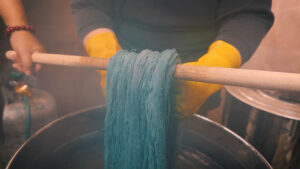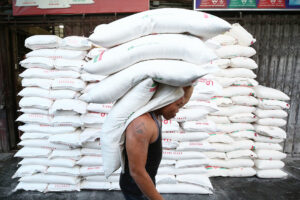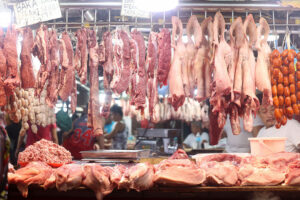A POP-UP at the National Museum displaying indigenous textiles on Sept. 30 displayed so much more than scores of cloths: it was a showcase for the ASEAN Agriculture Ministers’ reception for Oct. 1, but also a story of hope.
The pop-up, the culminating project of Masda Aw (an Ilocano word for curiosity), displays the outcomes of a two-week engagement between Manila-based and Kalinga creatives. This involved artist and social activist Paul Mondok, journalist and author Yvette Tan, natural dye expert Diana Katigbak, creative strategist Raffy Tesoro, fashion photographer MJ Suayan, model Vanessa Tedesco, documentarian Arnold Amores, and Dr. Analyn Salvador-Amores, and led by Nina Tesoro-Poblador. The Kalinga region was represented by the Kalinga Indigenous Weavers Association (KINWA), Tabuk District Jail community members, Councilor Arnel Banasan of Pasil, Mingor Chi Kultura (MCK), and social entrepreneur and community elder Florence Ao-wat.
This was initially proposed as an entry to the Benilde Open, but the project and its funding were picked up by Australian Aid, with the support of Mercedes Zobel (and a bevy of many other sponsors, from the University of the Philippines to Corditex and the De La Salle-College of St. Benilde).
The aim of the project, as summarized by Ms. Tesoro-Poblador, was to bring natural dyes back to the Kalinga, an initiative started by her mother, fashion designer Beatriz “Patis” Tesoro back in the 1990s. Her brother, Raffy, said in a video, “Mom actually brought back natural dye to the Philippines. I was one of the first to learn it, aside from the traditional cultural bearers.”
Because of industrialization and the relative ease in its procurement, many, if not all, of the indigenous weaves that the Kalinga people produce are currently made from synthetic fiber and dye. This project was able to produce traditional woven fabrics from Philippine-grown cotton, colored with dye plants that can be found in the Philippines.
In the pop-up, which ran from Sept. 30 to Oct. 1, there was a framed display of swatches and threads. Indigo produced a variety of blues depending on how often the fabric had been dipped (thus increasing the dye’s intensity). Achuete (annatto seed) produced a dusty pink, depending on the mordant used (mordant is a substance used to make dyes adhere to yarn; the ones used for the project included alum, copper, and iron). Talisay produced yellow-green to black; coffee, as expected, produced brown. Mahogany bark produced a rusty red, while mango leaves created a creamy yellow.
The project sounds exciting and there is a possibility of scaling up, making the project live on beyond its two-week initial engagement. Mr. Tesoro himself said, “It’s a niche market, but it’s a potentially very lucrative niche market.”
Ms. Katigbak, in an interview during the pop-up, talked about the possibilities. “The supply is already there. We just need more people to adopt it. It’s good that we already have our own yarns, because it starts there.”
“Hopefully, through this project, we’re able to have a chain effect, not only attracting more supply for dyestuff, but also our own fully grown native textiles from the ground up.”
While this promises to be a future premium product, but for indigenous weavers, a large part of their problem is accessibility to their work: the work can be too expensive, or simply too far from centers of commerce. Native textiles should come at a price, considering all the work done to make them; however, since they come at a premium, the challenge is making them within reach of anyone, and still fair to the weaver.
“We could probably be able to adapt this to several different municipalities or locations,” said Ms. Katigbak, offering a solution to this problem of economies of scale. She says that natural dye plants are dependent on the locality: “What’s endemic in the area.”
“If everything goes well, our regions could be interconnected. There’s a presence of dye-yielding plants in Luzon, Visayas, and Mindanao — they could be specialists of that color,” she says. “You could make communities that specialize… it could be a network; an ecosystem.” — Joseph L. Garcia






